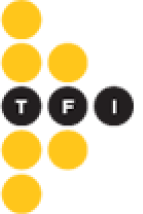Sea Freight Rates: Understanding the Common Terminologies and Jargons

Do you need to move containerised freight? Most shippers would agree that waiting on forwarders to give a quote is the most frustrating part of this operation. However, the struggle usually doesn’t end there. After obtaining it, you’ll have to deal with the logistics acronyms and terminologies in your sea freight quotes.
We understand how this can impede the flow of your operations. So, we have rounded up below a list of the common supply chain management terms regarding surcharges that appear in sea freight rates.
This guide consists of parts, such as pre-carriage, carriage, on-carriage, and additional fees.
Pre-carriage
Pre-carriage sea freight fees pertain to the different transportation charges involved prior to port delivery and loading the container onto a vessel. Below is the detailed list of pre-carriage ocean freight costs:

- Chassis Pull – The cost of securing chassis equipment utilised in drayage services. Generally, this fee is dependent on the port, availability of the equipment, and whether or not the equipment will be sent back to the same place or to another location.
- Customs Clearance – This refers to the administration charge imposed by a customs broker for the clearance of commodities, be it for import or export.
- Fuel Surcharge (FSC) – This charge is a supplemental fee that is added to the base rate, and it is based on the variable costs of national diesel prices. Carriers implement this charge to offset the expenses associated with providing their transportation services.
- Documentation Charges – These are imposed for the preparation of exportation documents that may be inclusive of applicable permits, licenses, and Certificate of Origin.
- Loading Fees – Imposed by warehousing and transloading facilities for loading a container.
- Wharfage – This fee is incurred at a port whenever a steamship firm employs a quay.
Carriage
This term pertains to the movement of containerised freight through sea from the loading port to the discharge port. During this phase of a good’s journey, here are some of these freight charges that you might incur.

- Sea Freight Rate – Also called marine shipping rates or maritime freight rates, this pertains to the basic freight charge for the movement of containers from one port to another. It is the rate quoted upfront by carriers.
- Accessorial Charges – These can be added by a carrier for any extra services needed for shipping.
- Bunker Adjustment Fee (BAF) – This surcharge evaluated by a carrier applies apart from the freight rates. It is designed to compensate for unforeseen adjustments in fuel price, which is why it is commonly referred to as ‘Fuel Adjustment Factor’ (FAF) charges.
- BOL/BL Charge – The fee for the Bill of lading, which is issued by a carrier to acknowledge receipt of the load for shipment.
- Cargo Declaration Data Charge – This is applied to avoid safety and security threats to inbound sea shipments heading towards the EU.
- Destination Delivery Charge (DDC) – This is imposed by carriers for the delivery of full containers to ports and terminals in the USA.
- Destination Documentation Fee (DDF) – Certain countries have extra documentation requirements. Checking this is imperative before shipping, as carriers impose this charge sometimes if other documentation is needed for shipment processing.
- Emergency Bunker Surcharge (EBS) – This charge is imposed when fuel market rates are higher than expected. It was established in 2018 to deal with the skyrocketing fuel costs.
- Detention – This charge applies when a company utilises the equipment of a carrier (such as chassis or containers) for a more extended period than the allotted free time.
- Emergency Rate Restoration (ERR) – This surcharge is usually added when the cost of shipping freight abruptly rises due to global events.
- Equipment Imbalance Surcharge (EIS) – A shipping line-imposed fee that covers the costs linked with container repositioning caused by weight imbalance on the vessel.
- Environmental Fuel Fee – This freight surcharge is imposed by shipping lines to counterbalance the price increase for the operation of an ocean vessel due to environmental regulations that need lower fuel sulphur content.
- Equipment Repositioning Surcharge (ERS) – This charge becomes applicable when a shipper requests carriers to reposition equipment from one site to another.
- General Rate Increase (GRI) – A shipping line-imposed rate when market forces tighten supply and demand.
- Export Service – A supplementary charge that can be evaluated when a carrier changes the transport document.
- Gulf of Aden Surcharge – To account for the possibility of piracy, shipping companies include a tariff for sea freight that transits through the Gulf of Aden.
- Importer Security Filing (ISF) – The U.S. Customs and Border Patrol mandates certain documents for containerised ocean freight shipments to the United States, for which this fee is levied.
- Hazardous Cargo Surcharge – In case of shipping hazardous or dangerous materials, an extra fee is applicable that encompasses necessary documentation, handling, and shipping expenses.
- International Security Port Surcharge (ISPS) – A fee imposed to cover security measures for inbound cargo shipments on an international scale.
- Low Sulphur Surcharge – An additional fee included in most freight forwarding rates to account for the cost difference between low sulphur fuels and heavy sulphur fuels.
- On-Carriage – An extra inland freight cost that may arise after the initial ocean freight rate.
- Ocean Rate – The fundamental cost of shipping containers from the origin port to the destination port, also known as ocean freight rate.
- Origin Terminal Handling Services – A charge for port services incurred before the vessel departs from the origin port.
- Overweight Surcharge (OWS) – A fee charged by ocean shippers when a container exceeds the assigned weight capacity for its size.
- Peak Season Surcharge (PSS) – A surcharge implemented by ocean lines to cover increased operating expenses during high demand periods, typically from mid-August until the end of the year.
- Piracy Surcharge – A surcharge imposed by shipping companies on cargo owners to offset losses incurred by ocean piracy and act as insurance against the associated risks.
- Port Dues – A tariff imposed by port authorities against shipowners for the use of the port.
- Special Equipment Surcharge (SES) – A fee applied when carriers must provide or handle special equipment such as refrigerated containers.
- Suez Canal Surcharge (SCS) – An additional fee applied when shipping through the Suez Canal to compensate shipping lines for their extra operating expenses.
- Terminal Handling Charge (THC) – A charge levied by shipping terminals for the storage and handling of containers before loading onto a vessel.
- Terminal Handling Charge Incurred at the Destination Port – Refers to terminal handling charges levied by the destination port for the storage and handling of unloaded cargo before beginning the inland transportation leg of its journey.
- Terminal Handling Charge Incurred at the Port of Origin – Refers to terminal handling charges levied by the port of origin for the storage and handling of cargo before loading onto a vessel en route to the destination port.
On-carriage
After a container leaves the port or terminal, any inland transportation is referred to as on-carriage. During this part of the container’s journey, companies may incur additional fees, including:

- Container Yard Charge (CYC) – A handling surcharge levied by a shipping line for receiving a container, storing it at their yard, and then delivering it to either the port or consignee, depending on whether it’s an import or export container.
- Chassis Usage Fee – A fee imposed for using a special trailer that allows carriers to transport ocean containers. This fee is typically charged to arrange equipment before the vessel arrives at port.
- Demurrage – A fee charged to cargo owners when containers are left at the port or rail terminal for longer than the allotted free time.
- Destination Delivery Charge – A surcharge that covers costs such as crane lifts off the vessel, drayage of the container within the terminal, and gate fees at the terminal operation. The amount of this fee is determined by the container’s size.
- Destination Terminal Handling Charges (DTHC) – A charge for lifting and removing a container from a vessel at port.
- Fuel Surcharge (FSC) – A surcharge applied to compensate carriers for fluctuating fuel costs. This fee may also be known as “bunker adjustment fees” or “fuel adjustment factor”.
- Unpacking Service Charge – Third-party warehouses and transloading facilities may impose an additional fee to unload the container at the destination.
- Customs Clearance – A fee paid to the customs broker to arrange customs clearance for a shipment. This surcharge may include the payment of any Customs Duty, VAT, or other charges related to customs clearance.
- Wharfage – Pier or dock owners assess this surcharge for the loading, unloading, and storing of goods.
- Documentation Charges – This charge may apply to compensate carriers for the sea shipping cost associated with preparing import documentation.
Additional Fees
Apart from the usual freight charges, there are several additional charges that may or may not apply to your sea shipping rates. These include:

- Accessorial Charges – Any charges added to the base tariff or base contract rate are known as accessorial. These may include fees for bunkers, containers, currency, and destination or delivery charges.
- Aden War Risk Surcharge – A surcharge added to compensate carriers for the costs of crew risk compensation, cancellation of economical speed, and redeployment of vessels for goods passing through the Gulf of Aden.
- All-Inclusive – This term refers to the total cost of shipping cargo from origin to destination, including all charges and transportation costs.
- Base Rate – The base rate for shipping cargo from point A to point B, also known as the ‘ocean freight rate’.
- Bunker Charge – This surcharge compensates carriers for higher fuel costs and includes fees such as bunker adjustment fees (BAF) and the fuel adjustment factor (FAF).
- Currency Adjustment Factor – This charge compensates carriers for currency fluctuations when they need to purchase goods or services in a foreign currency.
- Cargo Data Declaration Fee – This surcharge compensates carriers for the cost of declaring cargo information in advance to the European Union authorities.
- Port Dues – A fee levied by the harbour authority on ships using the port’s facilities.
- Destination Delivery Charge – A charge based on the size of the container and applied to the base ocean freight rate for many shipments. It covers sea shipping costs such as crane lifts off the vessel, drayage of the container within the terminal, and gate fees at the terminal operation.
- Detention – Fees charged when shippers or consignees do not return the carrier’s equipment (such as containers or chassis) within the allotted free days.
How TFI Helps Reduce Your Sea Freight Rates

Ocean freight rates fluctuate from time to time. When they soar, the various fees and surcharges associated with shipping cargos can put a strain on shippers and beneficial cargo owners (BCOs). However, the right preparation and strategy can help you avoid many of these fees. Experienced freight forwarders, such as TFI, can help shippers navigate the complexities of sea shipping and reduce the additional costs associated with containerised freight.
As a top single-source logistics provider, we offer comprehensive operational support that includes drayage and warehouse storage. We are also backed by a strong global agent network. By optimising these services and capabilities, we help our customers minimise the number of fees and surcharges they incur.
Contact us today to learn more about how we can reduce your company’s shipping costs with competitive sea freight rates! We are one of the leading sea freight companies in Dubai that you can rely on.
